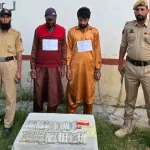The Youth constitute the age group of a society between childhood and adulthood. This chunk of the society is always considered its main asset vis-à-vis its destiny making.This is because, on the one hand, a considerable part of the population of a society comprises of the youth and, on the other hand, this group is enough energetic to lead the society on different fronts. However, the “collective conscience” of the society should never distrust this energy pool because, by doing so, it would do nothing but disservice to the society on the collective level.
Now, energy, by definition, means “the ability to do work.” This ability, however, should not be understood onlyin the mechanical terms, because, by doing so the holistic view of both “energy” as well as “work” would be lost sight of.Energy, broadly speaking, stands for the vital urge and potential to shape or reshape the course of events for the overall betterment of the society. Nevertheless, the reshaping process would not start unless this storehouse of energy is tapped and harnessed.
As is our experience in the physical world that any source of energy which is not harnessed almost goes waste and, when harnessed, wonders happen by dint of this energy. Examples thereof could be seen in the revolutions brought forth and wonders done through hydro-energy, wind-energy, solar-energy, etc. The harnessed energy, as such, smoothens the path of doing useful work which ameliorates the life condition of the human society.
Likewise, the age group called the youth possesses tremendous amount of energy, both physical and psychological, to do wonders for the society at large. This energy is so great that if it is left untapped or unharnessed, it would erupt as a volcano which would bring nothing but catastrophic destruction to the society. As volcanic eruptions change the physical landscape of an area, so would be done by that “eruption” which is caused by enormous amount of energy stored in the young beings of the youth.
These “human or youth volcanos” can result in the wrongs which a society witnesses in the form of social evils, moral degradation, anti-social activities, violence, and the like which permeate into the very social fabric. This dangerous state of affairscatches the society unawares like a wooden house is caught in by a conflagration or a boat by a whirlpool. Now, if there is an “explosion” everyone around would be at least able to know it, but it is an “implosion” in which the people inside a space (recently imploded Titan, for example) have no idea of the impending destruction until they are washed off the existence.
This state of affairs is very dangerous for the society because steadily but surely whole young population gets involved in these activities which are harmful not only to the youth but to the entire society which reaches the point of no return where nothing but desperation, hopelessness and disappointment remains in store for the society at large. That is why this group (the youth), with no avenues of guidance and hope at hand,gets solace in nothing but stagnation and finally a large number among this group end their lives by suicide. As such, the society concerned remains with helpless children and hopeless adults with a vacuum in between.
The socio-religious history of humanity, however, tells us that it is the youth who have always been the instruments of change for shaping the destiny of a people. This role played by the youth, however, has never been any mysterious or supernatural phenomenon. Actually, the youth, when guided properly, have given vent to their potential or inherent energy and utilized it in a positive way for the benefit of the whole community.Moreover, the role played by the youth has been both individual as well as collective and in both these ways they have ameliorated the condition of the human society.
On the individual level, the Qur’an has cited the example of Prophet Ibrahim (‘AS). While mentioning his youthful age, the Qur’an says: “We heard a youth talk of them (idols); he is called Abraham.” (21:60)The term (a youth) used for Prophet Ibrahim (‘AS) is very important in spite of the fact that the mission of any Prophet (‘AS) is driven and directed by God Himself. However, the Prophets (‘AS) have neither worked in a vacuum nor have they been supernatural beings performing supernatural acts. They have always worked amid human societies and their work and mission have either been challenged by or in their endeavours they have been helped by human beings. And, youthful and energetic youth, in any capacity, have been instrumental in shaping the human destiny both at the micro as well as the macro level. Naturally, the “special youth” (Prophet Ibrahim, here) succeeded in reshaping the destiny of majority of humanity which could be found in the form of three religious communities of the world, Jews, Christians and Muslims. That is why the Qur’an calls him the Imam (leader) of people.
Another important example cited by the Qur’an is that of the “People of the Cave” (As-habal-Kahaf) known as Seven Sleepers in history. These young men, according to the Qur’an, (18:10), driven by their monotheistic faith, decided to face every challenge and threat posed by their society. However, when the society decided topersecute them to force them to shun their faith, they decided to take refuge in the Cave. This refuge is very significant because youthful energy doesn’t mean that violence should be responded to by violence. Sometimes, “doing nothing” against one’s persecutors is also a viable solution to channelize the energy the youth have been bestowed with in a useful way, because, in this way, the energy is first reserved and then utilized for the benefit of one and all. This is like storing water in a reservoir to use it according to need at the opportune time and place.
In one of the traditions of the Prophet Muhammad (SA‘AS) which signifies time management, the time of one’s youth has been marked as a significant period in which an act could be performed with precision and elegance. The Prophet (SA‘AS) is reported to have said: “A person cannot move forward a single step on the Day of Judgment before her/his unless s/he answers five questions: 1) In what activities did s/he spend her/his life? 2) What course did s/he follow as youth? 3) Where from did s/he earn her/his possessions? 4) Where did s/he spend her/his earnings? 5) How far did s/he act upon the knowledge s/he had gained?” (Tirmidhi)This means the period of youth, although a part of the life as a whole, is mentioned separate to highlight the importance of youth because it is the period in which a person can fulfil the responsibilities of life in a better way.
The youth also become a connecting link between the children and the elderly. As such, they transfer the life experiences of the elders to the generation next. However, while transferring these experiences they are in a position to add to or subtract from these experiences as per the ever changing knowledge. As such, this new storehouse of knowledge put into practiceby theyouth would indeed form the Society’s Energy Pool.
(The author is Assistant Professor at HED, J&K. Email: [email protected])





